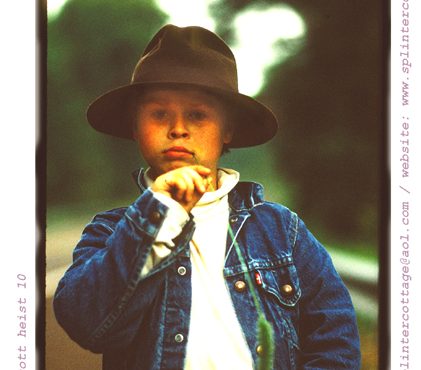BROOM PATROL
Spring House Farm: The Home Lassie … Came Home To
The leaves at Spring House appeared to be undecided. Some gave way to a dry ‚autumn rattle Like fingers tapping on a glass pane. Others persisted‚hanging around to gentle in the breeze. Killing time.
“Broom patrol”‚pronounced Jere Knight. Her voice is at once bouncy and playful as well‚authoritative and insistent. There’s a friendly theatrical lilt. An aside‚to the audience, wherever it might be.. A sort of joke shared between‚friends mocking circumstance in general.
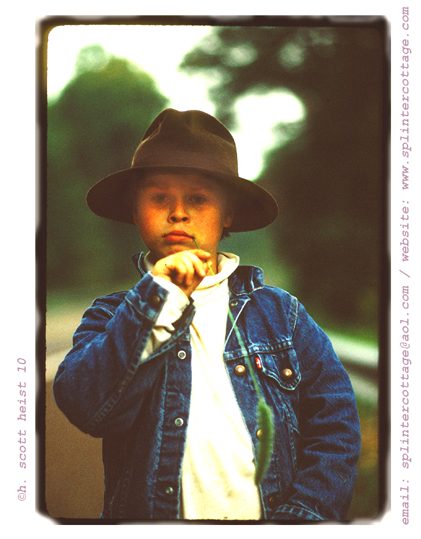
My son, Chris, spilled water on‚the terrace. Jere was leading him in a close procession from the tool‚closet under the porch stairs to the spill. Brooms over shoulders, Jere,‚in slacks and sandals, leading her troop of one excitable 8 year old,‚sporting a world war 1 style campaign hat. The comical, intentionally farcical, military march is a clue. A remnant of a few of Jere’s earlier‚ contradictions on parade today.
The pair is smiling in full understanding‚ separated by nothing more than 74 years of time. The understanding of‚kindred spirits shouldn’t quite make the sense it does. Still, it makes a more comfortable sense than most of life as it needs so little explanation.
Jere Knight. Just what does one say? A major in the WACS, a practicing‚ Quaker, and a holder of the bronze star for service in the European Theater‚under Eisenhower. Jere has made her home at Springhouse Farm for 50 years.
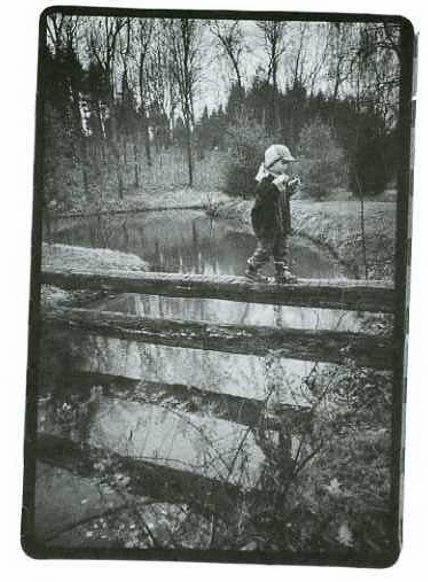
The old white Bucks County stone farm house has many stories. When even a‚few are combined, one begins to perceive an essence of home and what it can‚ mean. In the real terms of a person’s life. A mix of many things blending‚ better than could ever be imagined. A poet and a cow milker, an editor and ‚a mother, a wife, a keeper of the flame. One who believes in nurture, yet, has consistently made her own way.
Upper Bucks County is a special place. I live there myself. The Pennsylvania German portion of Bucks is a place of farmland and trees. Hills and streams. Old homesteads leading back to a time when people chose ‚some land and got an ax and chopped and fitted like blazes before the snows came. The old farm houses have a rough-hewn soul composed of the good‚faith efforts of many lifetimes. Those of us who live here use them for a‚while and then we are gone and others arrive to make their own small ‚changes. Sometimes the changes take. Sometimes they don’t.
Often they are ‚not really changes at all. Small personal imprints, perhaps. Tracks. An essence of being and living mingles and becomes one’s own moments in time. Like the leaves in autumn or the wild berries of spring.
Jere and Eric Knight, both working writers, arrived in Bucks County in 1939. It was a long circuitous route beginning in Philadelphia winding‚through a marooning in Hollywood, where Eric wrote screen plays and Jere ‚became assistant story editor for Selznik International Pictures.
Then an engineered escape back to New York. Riding the Super Chief. Jere “in first class with an orchid pinned to my dress and Eric in the baggage car with‚ pregnant ‘Toots’.” The border collie, who would become known to the rest of us as‚”Lassie”.
Jere continued with SIP as New York Story Editor and the Knights‚set up house in a converted stable wing built by Horace Greeley at Croton-‚On Hudson. A home that decades later stirs memories for Jere. And finally, there they were, in Bucks County on the road to Springhouse Farm .
Today,‚the wind still blows autumn leaves across the mounded hillside spring. The leaves crackle passing by the carefully carpentered red wooden door in a field stone butress. Housing the rare spring that made the farm possible.
On the eighty acres of Springhouse, in in the house set on the hill‚ between the upper fields in woodland and the lower fields made misty by‚ the Cooks Creek , the Knights felt they could write, edit, and create with the‚freedom of their own schedules. The key was to farm and “grow our own food”. Jere says it “was a loving leap of faith”. A chance two people can take only with someone of total mutual trust. “Eric had no way of knowing I could be a pioneer woman and get my hands dirty.” And Jere adds, with a direct look from deep within her bluest of eyes, “I had no idea of the full extent of his craftsmanship as an artisan and farmer.”
And it was a‚thoughtful risk well taken. They had lived for a year and a half on a farm‚ in the Pickering Valley in 1933 and 34. Eric was film critic for the‚Philadelphia Public Ledger and Jere raised collies…. an austere life at ‚the height of the depression.
They felt they could do it again and took a gamble placing the chips on the red. And the red came up.* So, the Knights came to Bucks county. And Springhouse where, Eric expanded his story written for the Saturday Evening Post into the famed novel:” Lassie- Come Home”.
That is where where their collie: Toot’s (aka‚Lassie) rests in a stand of trees. On hill over looking the simple stone farm house, the home she really came to. And stayed on.
When Jere arrived with Eric in 1939, The Spring House of 50 years ago was not the Spring House of today. The couple liked “the look of the place”. “The funny little door with the Rose trellis without a hood.” appealed to their sense of home but, not to their sense of practicality nor their aesthetic. It was replaced by a small‚ roofed porch which kept the rain off as one opened the door. (Jere told me they thought it was a “hoot” but then implored me not to write that “as it is unkind.” Said to me, sternly, as a word to the wise.)
For two people on the same wavelength there was a lot to share. “The kind of thing you giggle over.” But within the giggles lay hard work. “It was tumble down.”‚says Jere as a matter of simple observation. Yet the simple stone farm‚house was fundamentally so sound that its virtues remain essentially the same today. It lacked conveniences, but the Knight’s expectations were those of their time. The world was in the middle of the economic mess now called: “The Great Depression”
The former New York Story Editor for Selznik International Pictures did the‚washing in a rain barrel, behind the house. Jere remembers not the‚ hardship but the enjoyment of the “wonderful soft water”. There was a garden on the south side of the house. And it was there that the traditions of community and Bucks County Culture came to the Knights.
The Bucks county countryside reminded Eric of his native Yorkshire. It wasn’t precisely the same, but close enough. One arrives at Springhouse on ‚a narrow dirt road, wooded on both sides that parallels a stream. “No Hunting signs “ carry the signatures of Jere Knight and her son Jeff Lindtner.
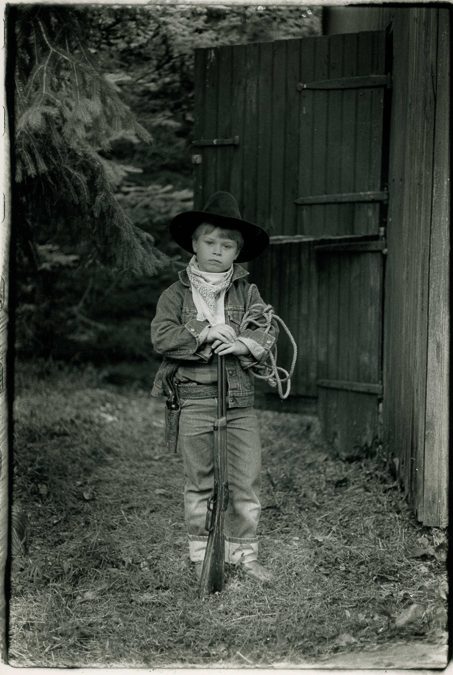
The “Watch for Children” sign has been amended carefully to say Watch‚ Children”+ PETS”. Obviously Jere’s work. A love of the county landscape, and pets bound Jere and Eric. Springhouse is where the seed blossomed into full creativity. There Eric could take his dog and typewriter to the woods‚to write, if Jere: “hovered too closely” near the desk he wrote on. A desk he fashioned himself from wood he found in a dying chestnut forest.
Creative people tend to look for meaningful places. Places with a heartbeat of their own. A space where the hard that must be done work, can be done. First they arrive, then they look for a place to cook and create. Two necessary functions of life.
“Food was needed …. and I was harvesting from what was left of the vegetable garden … green tomatoes. They would keep through the winter months.” Watching the harvest, were their neighbors, the Freeh family.
Shortly‚ thereafter, the Freeh’s arrived bringing a cart of cabbages down Springhouse Lane. “These will keep through winter.” And a friendship was born. The Freeh’s gave the Knights food for their bodies and the Knight’s gave the Freehs words and music … food for the soul. A neighbor’s friendship bloomed like the Bucks county countryside, naturally. With peaceful grace.
The book has had staying power. Like the place from which it took form. The word: “Home” is important. More staying power than Eric’s other exquisitely crafted books. Perhaps it is the many levels and realities that seem to find their way from the pages to the world’s collective memory.
Eric Knight, a Quaker, wrote a novel about a boy, a family, a social order and a dog. As a work of philosophy, it is more. Eric ‚built a durable legend of hospitality, the living of life, and the concept of home through his craft and culture. He demonstrated value and quality‚and reason for home.
A veteran of the first World War and himself, one of millions of tragedies in the second, he wrote a few pages before his death; concerning war and peace and man in general: “And if he has been given so little of the fullness of life during peacetime , then he may not consider‚ wartime the greater of two evils.” A peace within one’s home. The opportunity to live life.
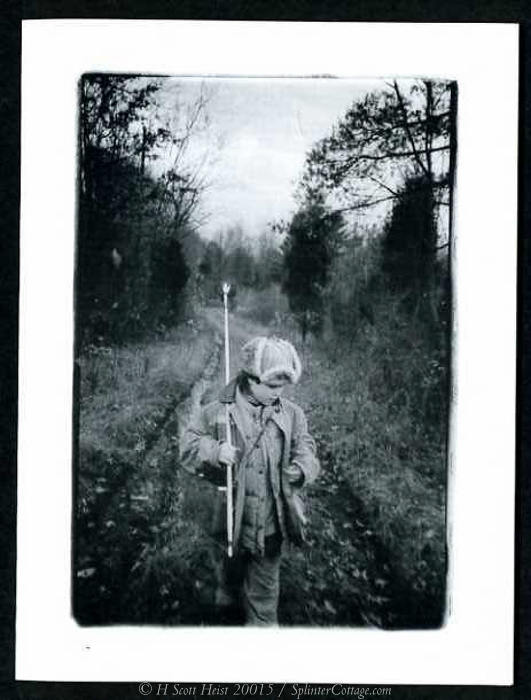
Jere say she looks for a sense of order at home. As a friend, I would say she insists upon it. “I crave serenity, that’s why I became a Quaker.” Her belief produced a way of life. The living life at Springhouse offers an example of a peaceful way of life for the world by keeping the concept of “Lassie’s” home alive.
Visitors arrive in response to the philosophy of Eric’s writings and Jere’s continuum. From all over the world. They are as varied as a lone Priest with his mother, a Japanese teacher, to a group of Lehigh University students with their professor.
Jere’s son, Jeff Lindtner, understands the message as well. He has kept the ‚spirit of Spring House, in his own way. The drift has also been caught by ‚an itinerant photojournalist who lives just over Ghost Mountain and down the winding road and through the haunting autumn leaves.
My son and I have received this greatest of gifts from both my friends… the hospitality of a neighbors home that is open and real within its imperfections.
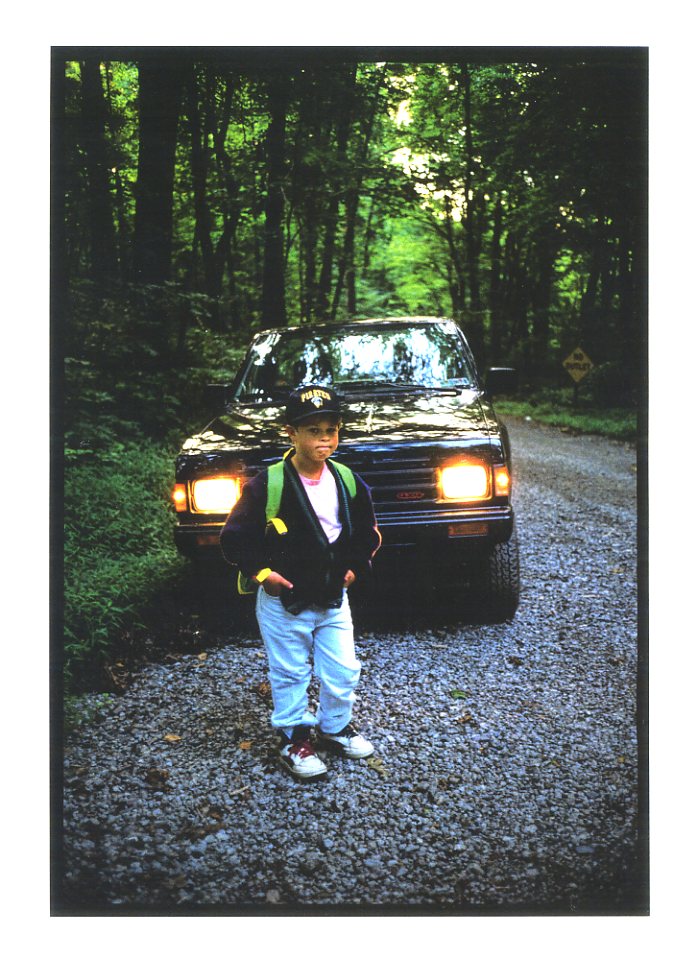
Spring House Farm has a warmth and serenity. It is a space in which the peace inside of all of us can be encouraged. And perhaps even won.
(Note as information not publication: Scheduled as Lehigh University Magazine Story … Spiked politically as incompetent although it was written in their style … not mine. The “editor” insisted that it needed so much rewrite it would require his by line. We didn’t do that and a single photograph of Jere ran with selections from 2 separate poems. Both beginning with the same words, alas. Quite an editor. This was an issue to the concept I suggested: Home. An identity for the University. Of course payment was with held until I visited the senior VP. Both Jere & I worked there.
Jere was named on a Pulitzer and I received nearly 200 awards in 20 years. At the end, I often found out about them from a 3rd party as they were delivered to the University. I’m sure being an exemplitory woman of achievement was good for a certain level of trouble there too. Of course there were some good people. But I came out of the advertising, newspaper. magazine world of NYC & Phila. … and never experienced anything like this. Jere said I surely should not have given in. She said:”You know people actually slept with people to get movie parts?” I replied I had heard such stories. Even at Lehigh.)
© h scott heist 20/SplinterCottage.com.
This is the professional of work of H. Scott Heist and all rights are reserved. Use only with written release, license, and permissions from SplinterCottage.Com or via SplinterCottage@AOL.Com.
